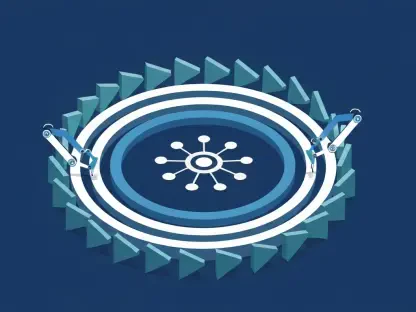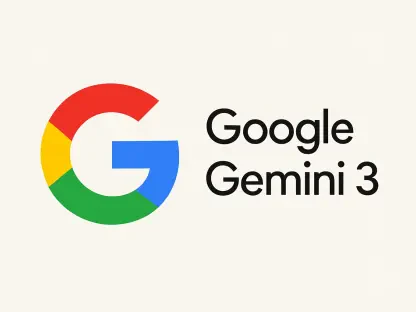The persistent challenge of developing effective Standard Operating Procedures (SOPs) has been a significant struggle for biologic, device, and drug companies. Over the past five years, the most common FDA observations have highlighted issues related to poorly developed, nonexistent, or improperly followed SOPs. This ongoing struggle emphasizes the industry’s need for more efficient and effective solutions in managing SOP development and compliance. The advent of generative AI presents an opportunity to address these issues, offering immense potential benefits and practical applications in enhancing SOPs without compromising compliance.
Understanding Generative AI and Its Limitations
Generative AI, a specialized subset of artificial intelligence, includes models such as ChatGPT, DeepSeek, and Claude, which generate content based on analyzing patterns in existing data. These models can significantly streamline the SOP development process, reducing the time and effort required during creation. By leveraging historical data and industry-specific knowledge, generative AI can produce initial drafts or suggest detailed improvements to existing SOPs.
However, it is crucial to recognize the limitations of generative AI models. They can generate content, but the relevance, accuracy, and applicability of the output must be carefully evaluated to ensure it is both contextually appropriate and factually correct. Because AI models rely heavily on the quality of the data they are trained on, users must provide essential background details within their prompts to enhance the accuracy and relevance of AI-generated responses. This careful approach ensures that the generated content meets the necessary compliance and quality standards required in the pharmaceutical and biotech industries.
Moreover, the reliance on generative AI should not replace human expertise but rather complement it. Human oversight is essential in reviewing and validating the AI-generated content, particularly for highly regulated industries where accuracy and compliance with regulatory standards are paramount. This iterative collaboration between human intelligence and AI capabilities can significantly improve the quality and utility of SOP documents, leading to better compliance outcomes.
Low-Risk Generative AI Prompts for SOP Development
SOP Ideation
Using generative AI to brainstorm SOP titles is an effective way to ensure industry-standard terminology is used and relevant procedures are not overlooked. By employing a prompt such as “Generate a list of common SOPs for a [program type] company,” AI can quickly provide a focused list of SOP titles, saving valuable time and ensuring that no core SOPs are omitted. This approach streamlines the initial phase of SOP development, allowing companies to focus on drafting content rather than spending excessive time on brainstorming.
To further refine the results, providing the AI with additional background information, such as company type, therapeutic area, and development phase, can enhance the output’s relevance and specificity. This ensures the generated list is not only comprehensive but also tailored to the specific needs of the company. By including details such as regulatory region and the scope of SOPs, the generated list can be prioritized based on regulatory importance. This targeted ideation process enhances the efficiency and effectiveness of SOP development.
SOP Readability
Improving SOP readability is another key application of generative AI, as clear and comprehensible SOPs are crucial for effective implementation and compliance. Using the prompt “Rewrite this SOP for better clarity, consistency, and readability without changing its meaning: [paste SOP text],” AI can enhance the language and structure of SOPs, making them easier for staff to understand and follow. This approach ensures that SOPs are written in a consistent and standardized manner, reducing ambiguities and improving overall communication within the organization.
Generative AI can refine grammar, streamline sentence structures, and remove duplications, resulting in more user-friendly documents. Additionally, users can prompt the AI to identify conflicting information, align content with regulatory expectations, and compare the SOP against a style guide for formatting and tone. This comprehensive review process not only improves readability but also enhances regulatory compliance. As a result, staff members are more likely to understand and adhere to SOPs, reducing the risk of errors and non-compliance.
SOP Training
Generative AI can effectively support SOP training by creating quick reference summaries that aid in staff comprehension and retention. Using a prompt like “Create a quick reference summary for this SOP: [paste text],” AI can generate a summarized version of the SOP, highlighting key points and essential information. This condensed format is particularly useful for training purposes, as it simplifies lengthy SOPs and makes them more digestible for staff.
To further enhance the training materials, users can prompt the AI to format the output as a professional trainer, specifying formats such as lists, deck outlines, or infographic text. Including sections on common mistakes, FAQs, and best practices can provide additional support for staff, ensuring they have a clear understanding of the procedures. This targeted training approach not only improves retention but also facilitates more effective and practical training sessions.
Thoughtful Application and Review
While generative AI offers significant benefits in enhancing SOP development, it is vital to approach its application thoughtfully and meticulously. Blindly copying and pasting AI-generated content without thorough review and validation can lead to inaccuracies and potential compliance issues. The true value of generative AI lies in its ability to complement human expertise, not replace it. Therefore, integrating human oversight is essential in ensuring the quality and accuracy of AI-generated SOPs.
A collaborative and iterative approach, where AI-generated content is continuously reviewed, refined, and validated by subject matter experts, can significantly improve the relevance and utility of SOPs. This process involves a careful review of the generated content to ensure it aligns with regulatory requirements, company policies, and industry standards. Additionally, the content must be evaluated for contextual relevance and practicality, ensuring that it can be effectively implemented.
Moreover, by continually refining the prompts and providing detailed background information, companies can enhance the quality of AI outputs over time. This ongoing collaboration between human intelligence and AI capabilities can lead to progressively improved SOP documents that effectively support compliance and operational efficiency.
Future Prospects with AI Integration
The persistent challenge of developing effective Standard Operating Procedures (SOPs) has been a major hurdle for biologic, device, and drug companies. In the past five years, the most frequent FDA observations have pointed out problems related to poorly crafted, missing, or improperly followed SOPs. These ongoing struggles underline the industry’s pressing need for more efficient and effective methods to manage SOP development and ensure compliance. The rise of generative AI offers a promising opportunity to address these challenges, providing substantial benefits and practical applications in improving SOPs while maintaining regulatory compliance. Not only can generative AI streamline SOP creation, but it can also ensure accuracy, consistency, and adherence to guidelines, making it an invaluable tool for the industry. The integration of AI-driven solutions in SOP development could revolutionize the way companies approach regulatory compliance, ensuring that procedures are not only meticulously followed but also continuously improved.









